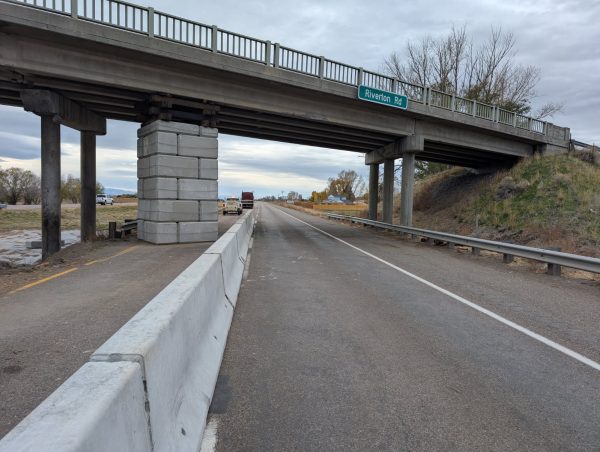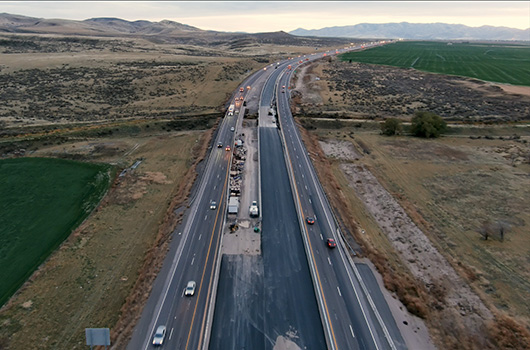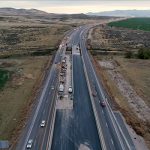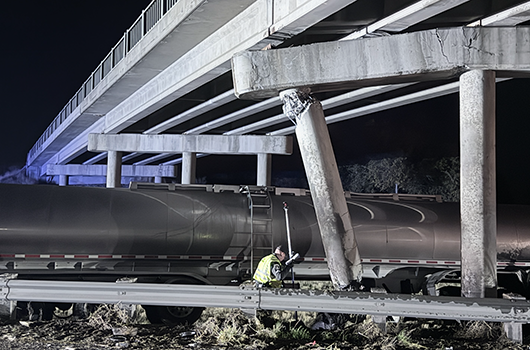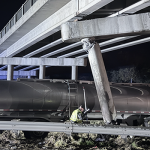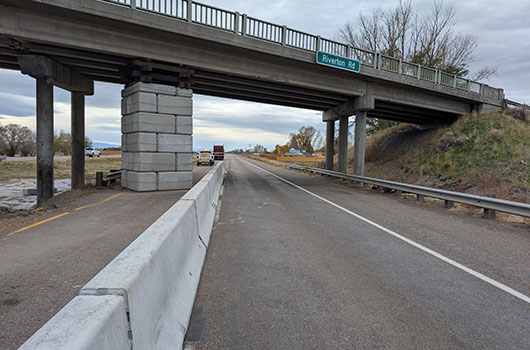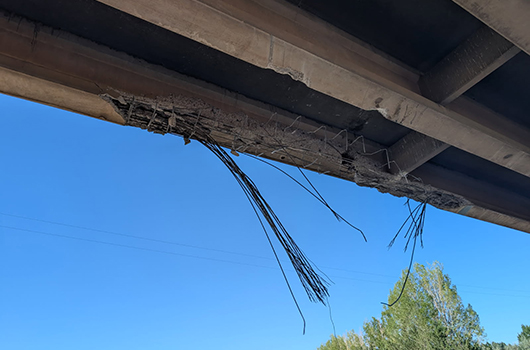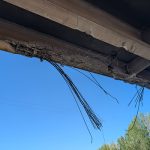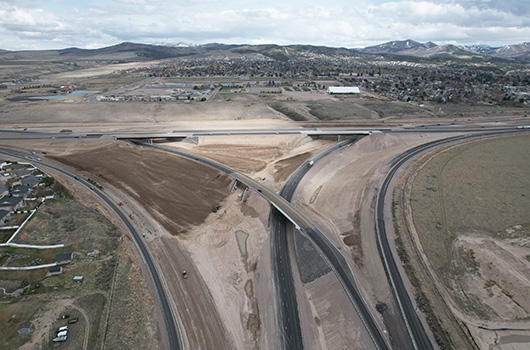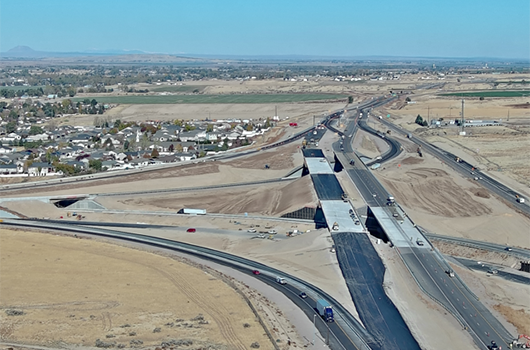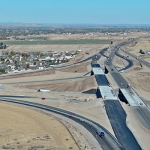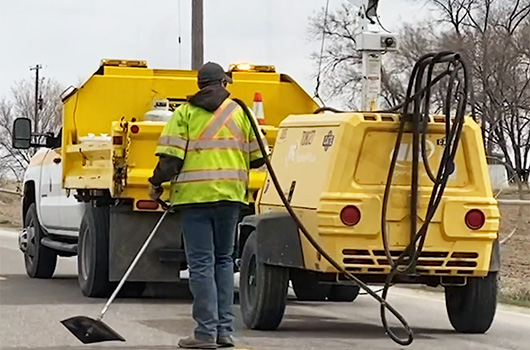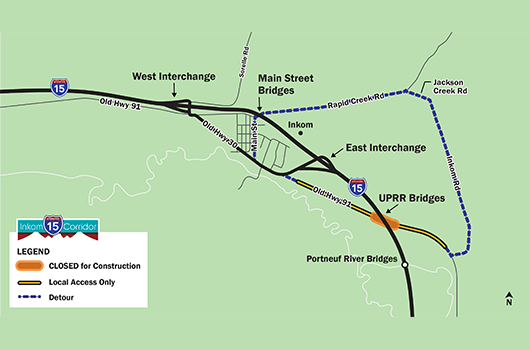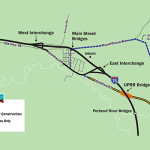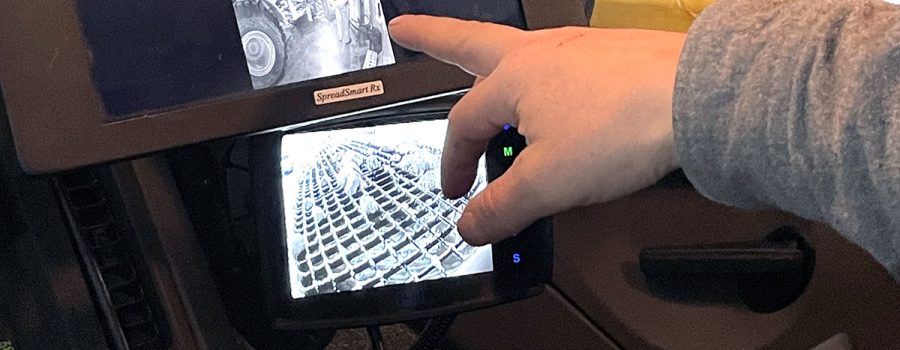At approximately 8:45 p.m. Thursday October 30, an empty milk tanker traveling on Interstate 15 near Blackfoot, Idaho went off the road and struck a pillar of the Riverton Road Overpass. The crash nearly obliterated the cab of the Kenworth semitruck with the engine tumbling yards down the median. The northernmost supporting pier nearest to the southbound lanes was violently bent, pushed several feet, and broken by the catastrophic impact. Yards of guardrail and ties were ripped up, broken and tossed about the scene. The pier cap bent downward and cracked over the central pier.
The driver of the semi-truck was life-flighted to Eastern Idaho Regional Medical Center in critical condition where his identity and status have not been shared officially. Idaho State Police, local law enforcement, and ITD employees from the Blackfoot shed moved quickly to close traffic on both the northbound and southbound lanes as well as the overpass.
Immediately following the crash Engineer Manager II Zak Johnson and Operations Engineer Greydon Wright were called to the site to inspect the damage. District Engineer Todd Hubbard also left for the site shortly after. Initial photos from the scene were sobering, and the decision was made to keep both the northbound and southbound lanes of the interstate closed. State Bridge Engineer Mike Johnson in Boise received cell phone photos and confirmed that the wisest course of action was to close the interstate until he could arrive on Friday morning to inspect the damage.
With the interstate closed between Exit 89 and Exit 93, traffic was diverted on to U.S. Highway 91 including through the city of Blackfoot. With an average daily traffic count of more than 30,000 vehicles, traffic quickly began to back up on I-15, along US-91, and in the city of Blackfoot. Adding to the confusion, the ramps at Exit 89 are not signalized, causing long delays for drivers trying to turn left. Traffic flowed better at Exit 93 due to special light timing plans enabled by electricians Landon Larsen and Kamron Hatch. Additional traffic began spill over to alternate local roads as drivers tried to find their way around the massive traffic jam.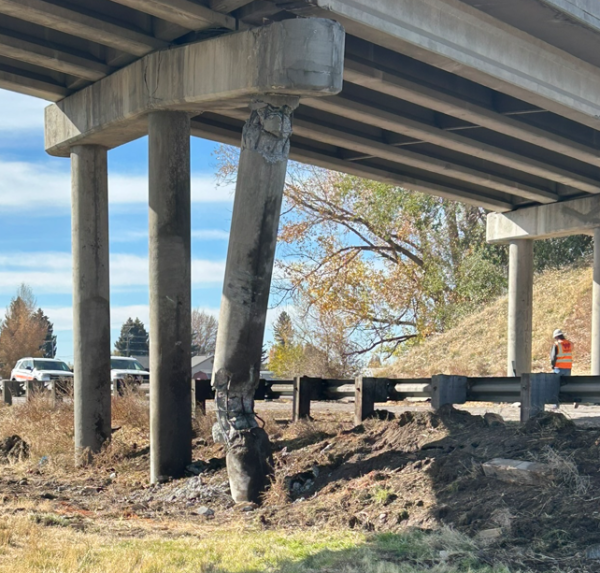
Word spread quickly throughout the community in large part due to photos shared late at night from operators out of the Blackfoot shed that showed the extent of the damage and helped the community to realize the importance of the closure of I-15. That post garnered nearly 500,000 impressions showing high interest in the community and across the state. Local media picked up the story from ITD’s Facebook page and ran the photos on their websites and on the morning news.
Friday morning, Hubbard requested cribbing material (wood posts) stored in the D4 yard to be sent to D5 to help with shoring up the bridge. A scissor lift was also ordered to be delivered from the Soda Springs shed to the crash site. Finally, a loader and an excavator were also brought in.
Johnson and Wright huddled down in Hubbard’s office to come up with a game plan. Soon young engineers were lurking at the doors of his office to listen in and learn. As Hubbard said later, “What an opportunity for these young engineers to learn, right? By watching closely what happens with this event they are better prepared for ten, fifteen, or twenty years down the road. When they see something similar unfold in the future, they’ll be able to say they had seen something like this before and know what steps to take.”
Meanwhile on I-15, morning commuter traffic north and south of Blackfoot began to back up again onto the freeways north and south of the city. City, county, state, and tribal law enforcement were stretched as they attempted to manage Halloween traffic.
District 5 alerted media that another update would be sent out in the afternoon after the bridge engineer had a chance to survey the damage. The first on-site interview with KIFI Channel 8 happened during their noon broadcast. At that time Hubbard, Wright, Zak Johnson, and Mike Johnson also arrived on-scene to fully inspect the damage. Cognizant of the teaching opportunity previously mentioned, a half dozen other engineers were also invited along.
Also on site were D5’s Paul Archibald and Darrell Hanners with a drone to take close-up photos of the damage for Mike Johnson to review. ISP also had a drone to 3D map the scene of the crash for their investigation.
The first concern to address was how likely it was for the bridge to have a catastrophic failure that would drop the deck on the interstate below. There was a possibility that if the central deck fell it could pull the eastern side of the roadway down with it, hence the full closure underneath the structure. With that later determined to be less of a concern, ITD had more options for how to restore traffic.
Key to restoring traffic on I-15 was the stabilization of the central and western portions of the bridge. A hasty meeting was held between the engineers, maintenance staff and local contractors Cannon Builders and Wadsworth Brothers. By 3 p.m. the group had finished their assessment and settled on the plan: stabilize the bridge by using concrete blocks, each 3,000 pounds with interlocking groves to keep them together, placed beside the piers.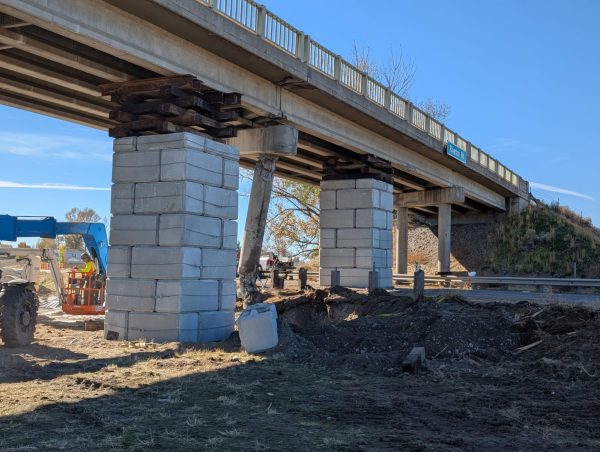
ITD issued another update to the media and to the public to share the news that by mid- morning Saturday drivers could expect one lane of traffic in each direction to flow on the northbound lanes.
Cannon Builders worked long into the night, and at 12:46 a.m. State Comm sent out an alert that traffic was being allowed onto I-15 again. Two crossovers near the bridge were utilized to shift the southbound traffic on to the northbound segment and off again. Just 28 hours after the entire closure of I-15, traffic was moving again.
Monday morning Cannon Builders and A-Core Concrete specialists began removing the broken pier and part of the pier cap. Some shoring was moved into the southbound passing lane so southbound traffic could be allowed back on the driving lane. Riverton Road will not carry any traffic until repairs are complete, which likely won’t be until the spring.
Community interest remains high and is almost entirely positive. Altogether, Facebook stats show that more than 1.5 million views of posts about the closure. Morning, noon, and evening newscasts carried the story throughout the weekend as did the local newspaper.
Hubbard expressed his thanks to all involved: “This was truly a team effort with multiple districts, multiple sheds, and multiple law enforcement agencies working night and day to keep Idaho’s traffic moving on I-15. I couldn’t be happier with our response.”
